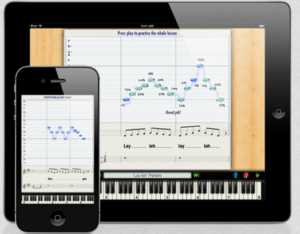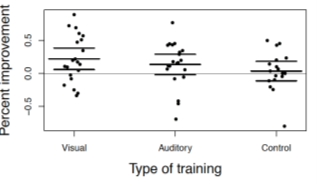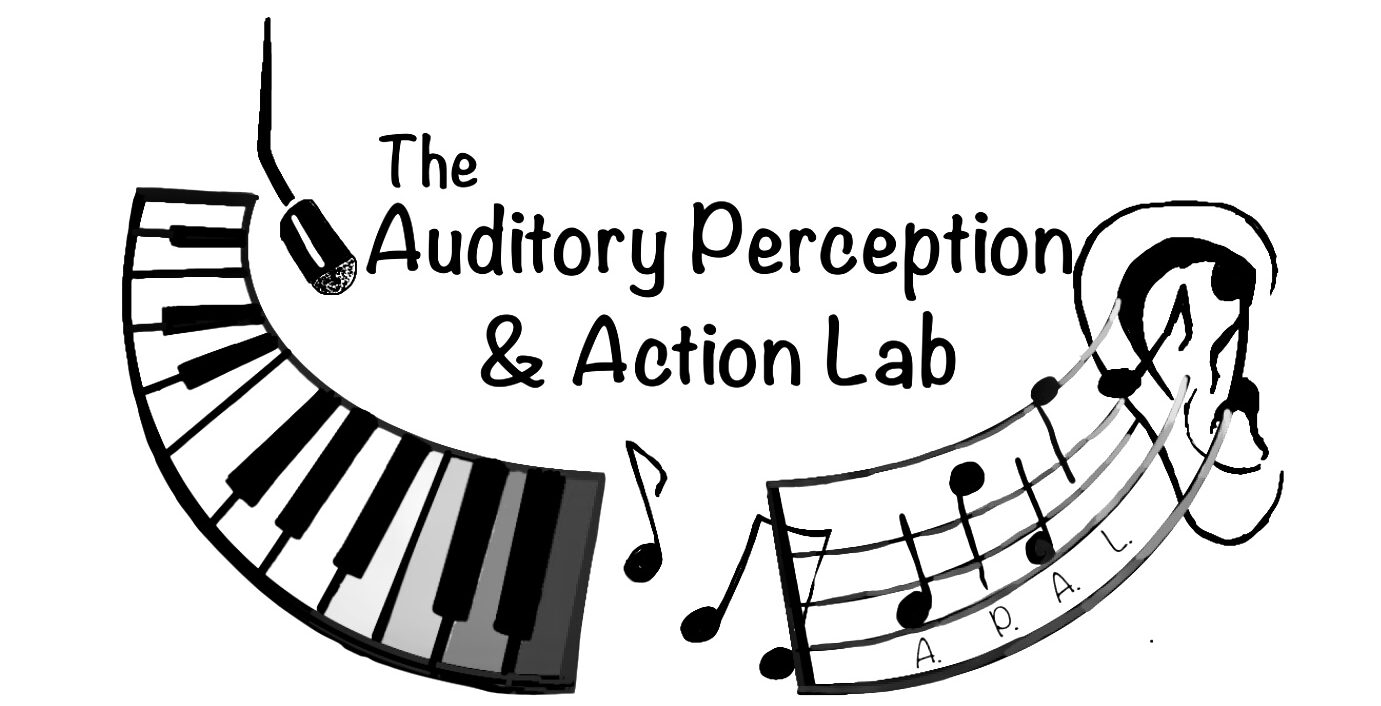
Teachers often struggle to find the best way to help a singer who can’t match pitch, and often resort to solutions like having the individual “mouth the words” rather than sing aloud. These measures yield lasting negative consequences to the individual’s musical participation and musical self-image. We are using results of basic research to develop more effective techniques that teachers can use.
TOur studies use the framework of the randomized controlled trial to assign individuals to different training regimes. One regime that has been effective in several studies is the use of visual feedback during auditory training (see image showing the devices), so the singer can see whether their sung notes are too high or too low and correct these errors in real time.
Participants improve significantly even in a single experimental session with this intervention, but do not when using only auditory intervention or no intervention (see plot from Berglin et al., 2022).

Theoretical goals of this research include using training effects to test hypotheses about the origin of poor singing. For instance, the use of visual feedback addresses whether poor singing is due to mismapping of auditory-vocal connections in the brain that may be restored through augmented visual feedback.
Applied goals of this research include working toward a more fully inclusive pedagogy for vocal training.
